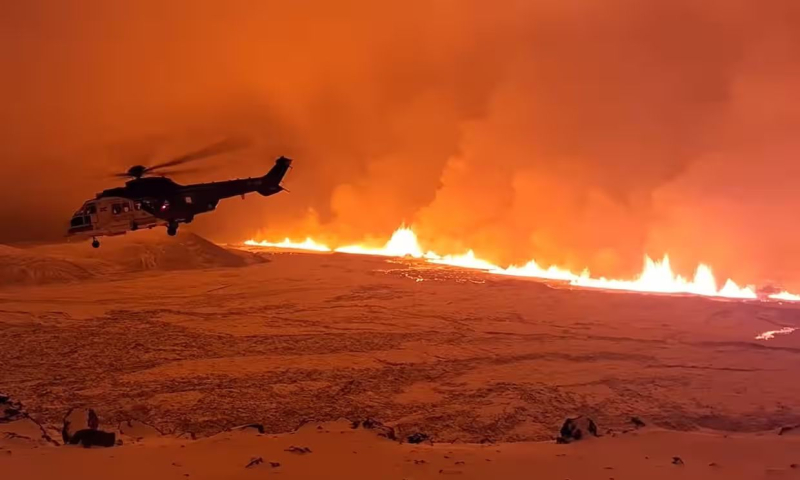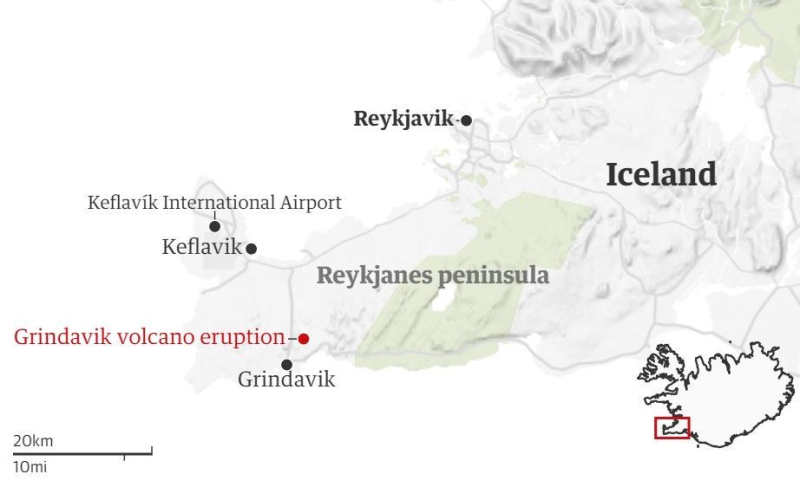Authorities evacuated almost 4,000 residents of the fishing town of Grindavik.
A volcano erupted on the Reykjanes Peninsula in Iceland.
The Guardian reports this.
A volcano in the southwest of the country has erupted, spewing lava and smoke over a wide area after weeks of intense earthquakes, the country's meteorological department said.
Fearing serious consequences on the Reykjanes Peninsula, authorities evacuated nearly 4,000 residents of the fishing town of Grindavik in November after the area was hit by a “seismic swarm” of more than 1,000 earthquakes in 24 hours.

“Attention: the eruption began north of Grindavík at Hagafell,” the Met Office said on its website, noting that the eruption began just a few kilometers from the city, with cracks in the ground extending towards the village, located about 40 km southwest of the Icelandic capital Reykjavik.
The eruption began around 22:17 GMT after a series of small earthquakes around 21:00, the Met Office added.
Images posted online show lava erupting from cracks in the ground.
“Seismic activity, together with measurements from GPS devices, indicate that magma is moving southwest and the eruption may continue towards Grindavik,” the Met Office said.
The crack on the earth's surface was about 3.5 km long and was growing rapidly. Between 100 and 200 cubic meters of lava are ejected per second, several times more than previous eruptions in the area, Icelandic seismologist Kristin Jonsdottir told public broadcaster RUV.
Local police said they had raised their alert levels due to the outbreak, and the country's civil defense warned the public to stay away from the area while emergency officials assessed the situation.

Nearby Reykjavik International Airport remained open, although with numerous delays for both arrivals and departures.< /p>
Iceland's Foreign Minister Bjarne Benediktsson said on X that “there are no disruptions to flights to or from Iceland and international flight corridors remain open.”
Authorities said the Reykjanes Peninsula has seen several eruptions in uninhabited areas in recent years, but the latest outbreak could pose a threat to the town of Grindovik.
Although residents were allowed to return to their homes from 7:00 to 21:00 each day, and some businesses had reopened, they were not allowed to stay overnight or walk around the city.
Reykjanes is a volcanic and seismic hot spot southwest of the capital city of Reykjavik. In March 2021, lava fountains erupted from a 500-750 meter long fissure in the ground of the Fagradalsfjall volcanic system.
Iceland has 33 active volcanic systems, the largest number in Europe.
Recall that scientists recently stated that the awakening of a volcano in Iceland will be the beginning of a centuries-long cycle. According to Edward Marshall, a researcher at the Northern Volcanology Center at the University of Iceland, “time is up” and now all humanity can do is prepare for several hundred more years of eruptions on Reykjanes.
Related topics:
More news

